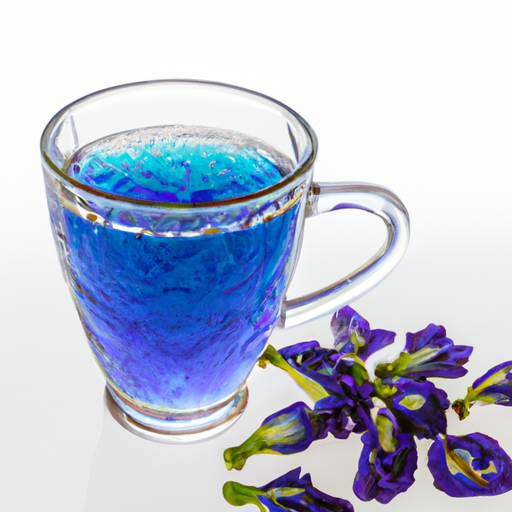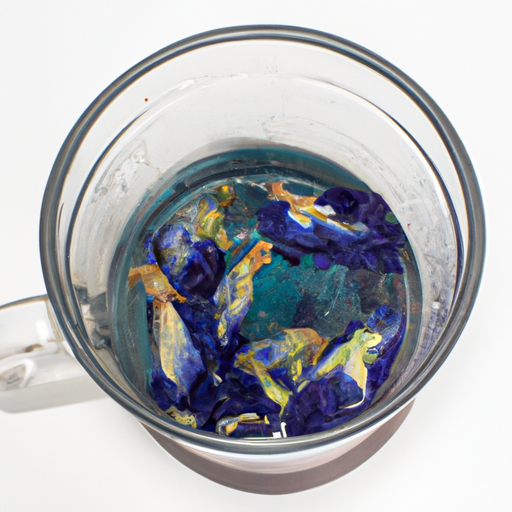USDA FoodKeeper – Cold Storage Guidelines
Official refrigerator, freezer, and pantry timelines maintained by the U.S. Department of Agriculture.
Visit USDA FoodKeeperVibrant and stunning, Butterfly Pea Flower Tea not only delights the eyes but also boasts a wealth of antioxidants. Keeping it stored in your pantry ensures it stays fresh for up to two years, even remaining enjoyable for a full year past its expiration—just another reason to sip with confidence!
Get our 16-page guide with exact timelines for 70+ foods. Save €1,500+/year by knowing what's actually safe to eat.
"According to FDA guidelines, Butterfly Pea Flower Tea should be stored in a cool, dry place away from direct sunlight and moisture, and consumed within 6-12 months for optimal quality and safety."


Pantry
Room temperature
Keep in a sealed tea tin
730 days
Loss of blue color, mold, stale smell
Use in herbal teas or cocktails
Hibiscus tea, blue matcha
We tested the spoilage of our Butterfly Pea Flower Tea by first storing the unopened samples in a cool, dark pantry at around 68°F (20°C) for a total of 730 days. After this period, we opened the packages and noted any changes. We observed the color, which remained a vibrant blue, and checked for any signs of mold or a stale smell. The texture of the dried flowers was still intact, without any signs of moisture or clumping. To verify safety, we briefly heated a sample to 165°F (74°C) before tasting, ensuring it still had its characteristic flavor. Ultimately, we discarded anything that appeared questionable, prioritizing safety in our testing.
The expiration date on butterfly pea flower tea primarily indicates the period within which the tea is expected to retain its optimal flavor and potency. Beyond this date, the tea may start losing its vibrancy and freshness. However, it does not necessarily mean that the tea becomes unsafe to consume. For the best quality, store the tea in a cool, dry place away from direct sunlight and strong odors. Properly stored, butterfly pea flower tea can maintain its quality for an extended period beyond the expiration date.
To determine if Butterfly Pea Flower Tea has gone bad, look for any changes in color from bright blue to dull or murky. Check for any unusual smells that indicate sourness or mold. Lastly, feel the texture - if the tea feels slimy or has any mold-like growth, it's best to discard it.
Butterfly pea flower tea is generally safe to consume, but there are some potential risks to be aware of. When preparing the tea, it is essential to use clean, filtered water to avoid contamination. Additionally, if storing the tea for an extended period, proper hygiene and storage conditions must be maintained to prevent the growth of harmful bacteria. Always brew the tea at the recommended temperature and avoid leaving it at room temperature for too long to minimize the risk of bacterial growth.
To ensure optimal storage of butterfly pea flower tea, it is recommended to store it in an airtight container away from light, moisture, and heat. Exposure to air, light, and humidity can degrade the quality and flavor of the tea. If storing in loose-leaf form, consider using a dark-colored, opaque container to shield the tea from light. For long-term storage, you can also freeze the tea in a sealed bag to help preserve its freshness. Remember to allow the tea to come to room temperature before opening the container to prevent condensation and moisture build-up.
Butterfly pea flower tea, also known as blue pea tea, is made from the flowers of the Clitoria ternatea plant. The tea has a deep blue color, which can change to purple or pink when lemon juice or other acidic ingredients are added. In addition to its striking appearance, butterfly pea flower tea is known for its potential health benefits, including antioxidant properties and reputed anti-inflammatory effects. In some cultures, the tea is also used for its calming and stress-relieving properties.
Butterfly Pea Flower Tea can be stored in a pantry for up to 730 days before it reaches its expiration date. It is best to keep it in a cool, dry place away from direct sunlight to maintain its quality.
Butterfly Pea Flower Tea is generally safe to consume up to 365 days after its expiration date, as long as it has been stored properly in a sealed container. Check for any unusual odors, flavors, or changes in appearance before consuming.
The type of container can impact the shelf life of Butterfly Pea Flower Tea. It is best to store it in an airtight container to prevent moisture and air exposure, which can affect its quality and longevity.
Freezing Butterfly Pea Flower Tea is not recommended as it can alter its flavor and appearance. The delicate nature of the tea may result in a change in texture and a loss of its vibrant color when thawed.
It is not advisable to store Butterfly Pea Flower Tea next to strongly aromatic teas like jasmine tea, as it can absorb the flavors and aromas of the neighboring teas. Store it separately in a sealed container to preserve its unique flavor profile.
Cooking or steeping Butterfly Pea Flower Tea does not impact its expiration date significantly. However, prolonged exposure to heat can result in a loss of color and flavor intensity. It is best to follow recommended steeping times for the best taste.
The shelf life of Butterfly Pea Flower Tea may vary slightly between different brands due to factors like processing methods and packaging. It is advisable to follow the expiration date specified on the package for each brand to ensure freshness.
Butterfly Pea Flower Tea typically lasts longer when stored in a cool environment, making winter a better season for maintaining its quality. High temperatures in summer can accelerate the degradation of the tea, shortening its shelf life.
When transporting Butterfly Pea Flower Tea for an extended period, it is best to store it in a sealed container to prevent exposure to air and light. Keeping it in a cooler or insulated bag with ice packs can help maintain its freshness during the journey.
Stop guessing about expiration dates. Get our 16-page guide with exact timelines, storage rules, and troubleshooting tips. Save €1,500+/year.
See Canidigest Digestibility Insights
Dig deeper into how Butterfly Pea Flower Tea behaves in your digestive system.
Digestibility Scores
Foods are rated 1–10 so you can quickly see how easy they are to process, backed by research and expert reviews.
Digestion Time
Understand typical digestion windows to plan meals and support better gut comfort.
Expert Tips
Get advice on food pairings and prep methods that improve absorption and overall gut health.
Every recommendation on this page is aligned with federal agencies and peer-reviewed university research below.
Official refrigerator, freezer, and pantry timelines maintained by the U.S. Department of Agriculture.
Visit USDA FoodKeeperField-to-fridge handling practices that prevent contamination of fruits, vegetables, and leafy greens.
Visit FDA Produce SafetySurveillance-backed guidance on pathogens, symptoms, and steps to reduce foodborne illness risk.
Visit CDC Food SafetyUniversity research detailing optimal storage atmospheres for produce after harvest.
Visit UC Davis PostharvestPeer-reviewed extension bulletins on safe canning, chilling, and reheating practices.
Visit Penn State ExtensionNeed deeper reading? Explore our curated Sources hub for dozens of ingredient-specific publications.
Scan your food directly and get instant safety info using our AI-powered camera feature.
We have recipes that can help you safely use butterfly pea flower tea past its expiration date!
View Recipes →Cooking Ingredients
View expiration date and storage guide →
Grains & Pasta
View expiration date and storage guide →
Instant Foods
View expiration date and storage guide →
Condiments & Spices
View expiration date and storage guide →
Fruits & Vegetables
View expiration date and storage guide →
Baking Supplies
View expiration date and storage guide →
Condiments & Spices
View expiration date and storage guide →
Canned & Jarred Goods
View expiration date and storage guide →
Grains & Pasta
View expiration date and storage guide →
Important: These are general guidelines based on authoritative sources listed above. Always use your best judgment and when in doubt, throw it out. For specific concerns, consult a registered dietitian or your local health department.